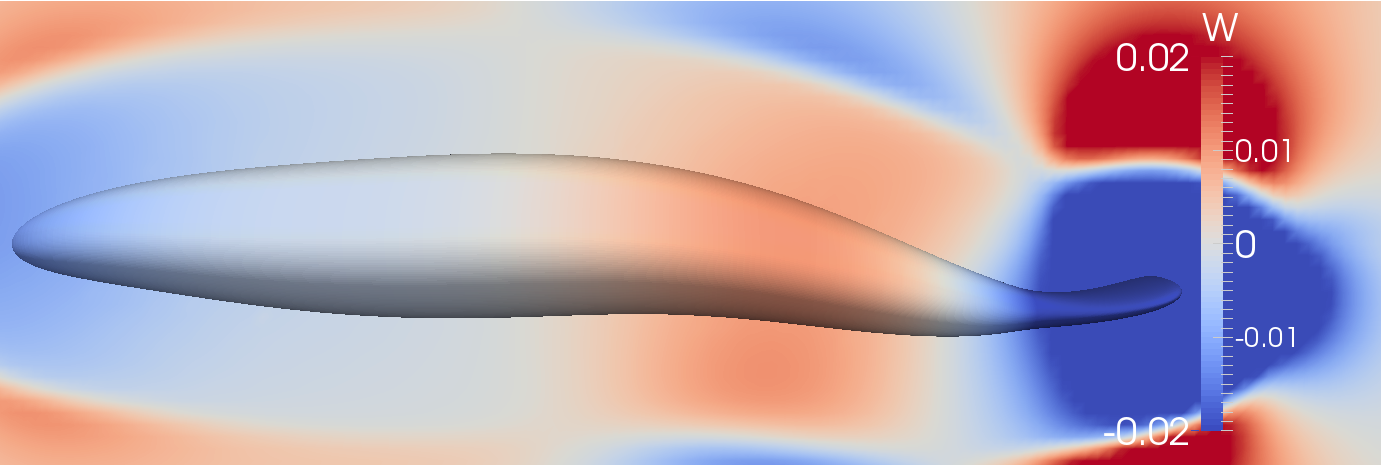Section: Application Domains
Bio-inspired robotic swimming
In bioinspired robotic swimming the aim is of simulating a three-dimensional swimmer starting from pictures. The first step is to build the three-dimensional fish profile based on two-dimensional data retrieved from the picture of an undeformed fish at rest. This is done by a skeleton technique and a three-dimensional level set function describing the body surface. Then the skeleton is deformed using an appropriate swimming law to obtain a sequence of level set functions corresponding to snapshots of the body surface uniformly taken at different instants.
Thanks to skeleton deformation we typically reconstruct of the snapshots necessary to simulate a swimming stroke, since the time scale of the simulation is significantly smaller than the time step between two subsequent reconstructed snapshots. Also, the surface deformation velocity is required to set the boundary conditions of the flow problem. For this reason it is necessary to build intermediate level set functions and to compute the deformation velocity field between subsequent fish snapshots. Optimal transportation is well suited to achieve this goal providing an objective model to compute intermediate geometries and deformation velocities.
Numerical simulations have been performed in 3D, see figure 4. However, it has been observed that these algorithms do not preserve the physics/features of the represented objects. Indeed, the fish tends to compress during the deformation.
|
For this reason, we will consider incompressible or rigid transports. Another example of bio-inspired swimming is presented in the highlights section.



